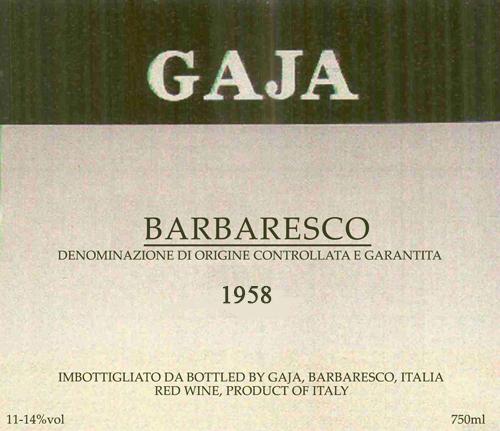1958 Barbaresco Red Blend
Gaja Barbaresco, a remarkable red blend from the esteemed Barbaresco region, exemplifies the elegance and depth that old-world wines have to offer. This vintage, dating back to 1958, showcases a deep, alluring red color that invites exploration. The wine presents a medium-bodied profile, striking a harmonious balance between moderate acidity and luscious fruit intensity. Subtle yet notable tannins cradle the structure, offering a firm yet refined mouthfeel that speaks of its age and craftsmanship. With its dry character, Gaja Barbaresco showcases an intricate tapestry of flavors that evolve beautifully, making it a true gem from one of Italy's most revered wine-growing areas. This wine exemplifies the art of winemaking in Barbaresco, delivering an experience that is as memorable as it is enchanting.
Gaja Barbaresco, a remarkable red blend from the esteemed Barbaresco region, exemplifies the elegance and depth that old-world wines have to offer. This vintage, dating back to 1958, showcases a deep, alluring red color that invites exploration. The wine presents a medium-bodied profile, striking a harmonious balance between moderate acidity and luscious fruit intensity. Subtle yet notable tannins cradle the structure, offering a firm yet refined mouthfeel that speaks of its age and craftsmanship. With its dry character, Gaja Barbaresco showcases an intricate tapestry of flavors that evolve beautifully, making it a true gem from one of Italy's most revered wine-growing areas. This wine exemplifies the art of winemaking in Barbaresco, delivering an experience that is as memorable as it is enchanting.




